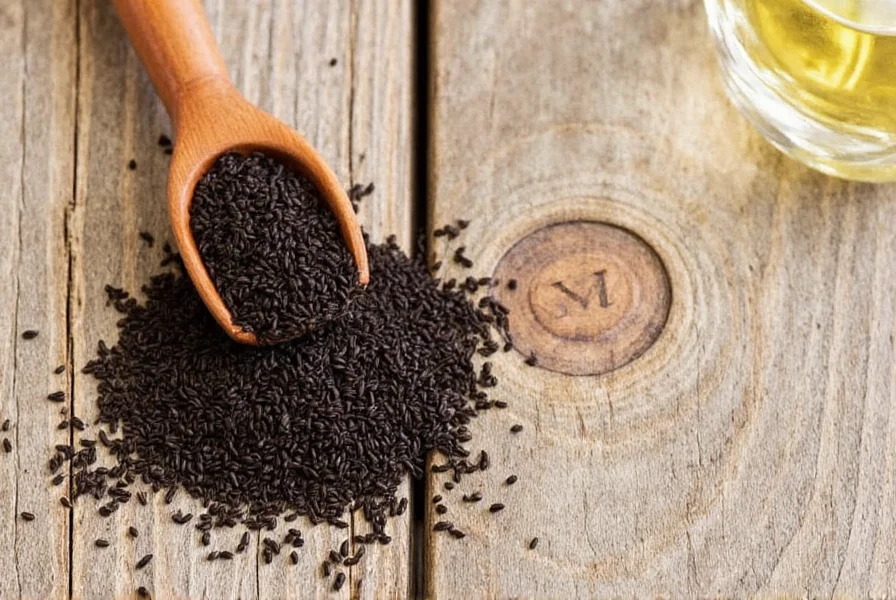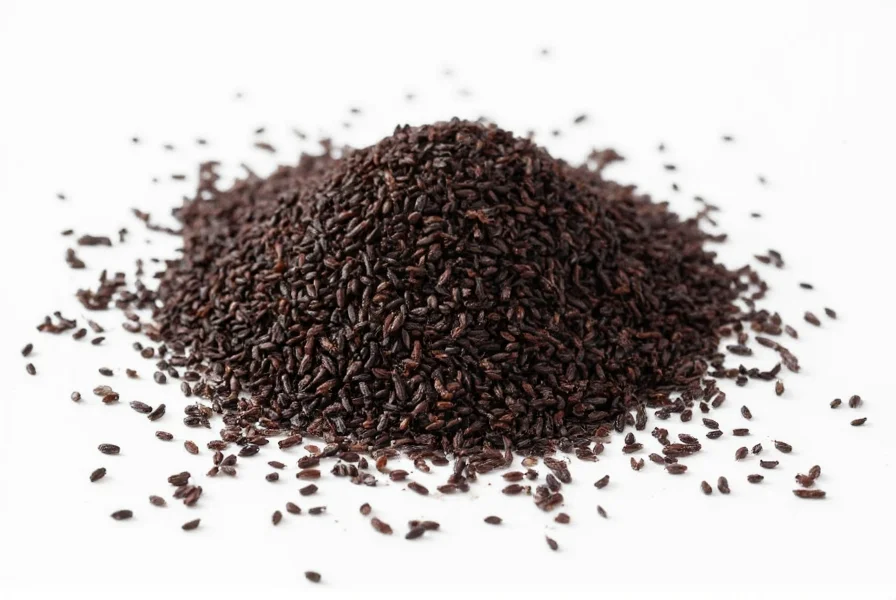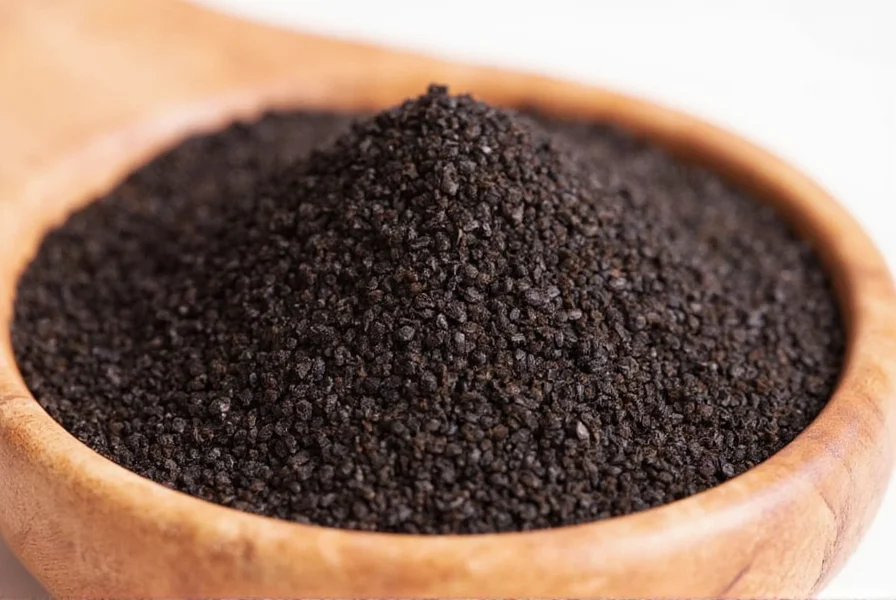Often confused with regular cumin, black cumin (kalonji) represents a completely different botanical species with unique culinary and potential therapeutic applications. This comprehensive guide explores the science-backed information about this ancient spice that has been used for thousands of years across multiple cultures.
What Exactly is Black Cumin (Kalonji)?
Despite its name, black cumin (Nigella sativa) isn't related to regular cumin (Cuminum cyminum). Botanically classified as a member of the Ranunculaceae family, these tiny black seeds come from a flowering plant native to Eastern Europe, the Middle East, and western Asia. The seeds, commonly called kalonji in Hindi and Urdu, have been referenced in historical texts including ancient Egyptian records and Islamic traditions.
The confusion between black cumin and regular cumin stems from similar flavor profiles and culinary applications, but they differ significantly in appearance, botanical classification, and chemical composition. Black cumin seeds are matte black with a triangular shape, while regular cumin seeds are lighter brown and elongated.
Historical Significance Across Cultures
Archaeological evidence shows black cumin seeds were found in ancient Egyptian sites, including Tutankhamun's tomb, suggesting their importance in early civilizations. In traditional Unani and Ayurvedic medicine systems, practitioners have utilized black cumin for respiratory health, digestive issues, and skin conditions for centuries.
The Prophet Muhammad reportedly described black seed as a cure for all diseases except death, contributing to its prominence in Islamic medicine. Across South Asia, kalonji remains a staple in breads like naan and paratha, while Middle Eastern cuisines incorporate it into spice blends and pickling recipes.
| Characteristic | Black Cumin (Kalonji) | Regular Cumin |
|---|---|---|
| Botanical Name | Nigella sativa | Cuminum cyminum |
| Family | Ranunculaceae | Apiaceae |
| Seed Color | Matte black | Light to medium brown |
| Flavor Profile | Nutty, slightly peppery, onion-like | Earthy, warm, slightly citrusy |
| Primary Active Compound | Thymoquinone | Cuminaldehyde |
Nutritional Composition and Active Compounds
Black cumin seeds contain approximately 30-35% fixed oil, 20-25% protein, and 3-5% essential oil. The most researched component is thymoquinone, which constitutes about 30-48% of the essential oil. Other notable compounds include:
- dithymoquinone
- nigellone
- alpha-hederin
- various fatty acids including linoleic and oleic acids
- trace minerals like calcium, iron, and potassium
These compounds contribute to the seeds' potential biological activities, making black cumin a subject of increasing scientific interest for various health applications.
Evidence-Based Health Benefits of Black Cumin
Modern research has begun validating many traditional uses of black cumin. Multiple studies published in reputable journals have examined its potential effects:
Anti-Inflammatory Properties
Research in the Journal of Ethnopharmacology demonstrates that thymoquinone inhibits inflammatory pathways, potentially benefiting conditions like arthritis. A 2020 systematic review concluded that Nigella sativa supplementation significantly reduced markers of inflammation in human clinical trials.
Antioxidant Effects
The seeds' antioxidant capacity, measured by ORAC (Oxygen Radical Absorbance Capacity), ranks among the highest of common spices. These antioxidants help combat oxidative stress, which contributes to aging and various chronic diseases.
Metabolic Health Support
Several clinical studies indicate black cumin may support healthy blood sugar levels and lipid profiles. A meta-analysis in Complementary Therapies in Medicine found that Nigella sativa supplementation significantly reduced fasting blood glucose and HbA1c levels in people with type 2 diabetes.
Respiratory Health
Traditional use for respiratory conditions has some scientific backing. Research suggests black cumin may help relax bronchial muscles and reduce inflammation in airways, potentially benefiting those with asthma or allergies.
It's important to note that while these findings are promising, most studies use concentrated extracts rather than culinary amounts. Consuming black cumin as a spice provides benefits, but therapeutic effects typically require higher doses under medical supervision.
Culinary Applications of Kalonji
Understanding how to use black cumin in cooking maximizes both flavor and potential benefits. Unlike regular cumin, which is often toasted first, kalonji works best when added early in the cooking process to develop its flavor.
Traditional Uses in Global Cuisines
In Indian cuisine, kalonji features prominently in:
- Breads like naan and paratha
- Curry bases and tempering (tadka)
- Pickles and chutneys
- Dal and vegetable dishes
Middle Eastern preparations often include kalonji in:
- Hummus and baba ganoush
- Spice blends like za'atar variations
- Flatbreads and cheese pastries

Modern Culinary Techniques
Chefs today incorporate black cumin in innovative ways:
- Infusing oils and vinegars
- Adding to salad dressings
- Enhancing roasted vegetable dishes
- Creating unique spice rubs for proteins
For maximum flavor release, lightly toast the seeds before use, but avoid over-toasting which can create bitterness. A general guideline is 1-2 teaspoons of kalonji per serving for most dishes.
Different Forms of Black Cumin and Storage
Consumers can find black cumin in several forms:
- Whole seeds: Most stable form with longest shelf life
- Ground powder: Convenient but loses potency faster
- Oil: Concentrated form often used for therapeutic purposes
- Capsules: Standardized doses for supplementation
Proper storage maintains quality. Keep whole seeds in an airtight container away from light and heat. When stored correctly, they remain potent for 1-2 years. Ground kalonji loses flavor more quickly and should be used within 6 months.
Safety Considerations and Usage Guidelines
Black cumin is generally recognized as safe when consumed in culinary amounts. However, certain considerations apply:
- Pregnant women should avoid medicinal doses as high amounts may stimulate uterine contractions
- Those with bleeding disorders should consult a physician before using therapeutic doses
- May interact with certain medications including blood pressure drugs and immunosuppressants
- Culinary use (1-2 teaspoons daily) presents minimal risk for most people
Therapeutic doses typically range from 1-3 grams of seed powder or 0.5-3 mL of oil daily, but should be determined with healthcare provider guidance. Always start with lower doses to assess tolerance.

Scientific Research Status and Future Directions
While thousands of studies exist on Nigella sativa, research quality varies significantly. High-quality human clinical trials remain limited compared to laboratory and animal studies. Current research focuses on standardizing extracts, determining optimal dosages, and investigating specific health conditions where black cumin shows most promise.
The scientific community recognizes the need for more rigorous, large-scale human trials to confirm many potential benefits. Until then, viewing black cumin as a valuable culinary spice with promising health properties—rather than a miracle cure—represents the most evidence-based perspective.
Frequently Asked Questions
What's the difference between black cumin and regular cumin?
Black cumin (Nigella sativa) and regular cumin (Cuminum cyminum) are completely different plants. Black cumin seeds are small, matte black, and triangular with a nutty, slightly peppery flavor. Regular cumin seeds are larger, brownish-yellow, and elongated with a warm, earthy flavor. They belong to different plant families and contain different active compounds.
What are the proven health benefits of black cumin seeds?
Research shows black cumin seeds contain thymoquinone, which has demonstrated anti-inflammatory and antioxidant properties in studies. Clinical evidence suggests potential benefits for metabolic health, including supporting healthy blood sugar levels and lipid profiles. Some studies indicate respiratory benefits, but most therapeutic effects require concentrated extracts rather than culinary amounts.
How should I use kalonji in cooking for maximum flavor?
For best results, add kalonji early in the cooking process to develop its flavor. Lightly toast the seeds before use to release their aroma, but avoid over-toasting which creates bitterness. In Indian cuisine, it's commonly used in breads, curries, and tempering. A general guideline is 1-2 teaspoons per serving. Unlike regular cumin, kalonji works well in both savory and some sweet applications.
Is black seed oil better than whole black cumin seeds?
Both forms offer benefits but serve different purposes. Whole seeds provide fiber and are ideal for culinary use. Black seed oil contains concentrated thymoquinone and is typically used for therapeutic purposes. For everyday cooking, whole seeds are preferable. For specific health goals under professional guidance, standardized oil or extracts may be more appropriate. Culinary use of whole seeds remains the most traditional and versatile approach.
Are there any safety concerns with consuming black cumin?
Black cumin is generally safe when consumed in culinary amounts (1-2 teaspoons daily). Pregnant women should avoid medicinal doses as high amounts may stimulate uterine contractions. Those with bleeding disorders or taking certain medications should consult a physician. Therapeutic doses typically range from 1-3 grams of seed powder or 0.5-3 mL of oil daily, but should be determined with healthcare provider guidance.











 浙公网安备
33010002000092号
浙公网安备
33010002000092号 浙B2-20120091-4
浙B2-20120091-4